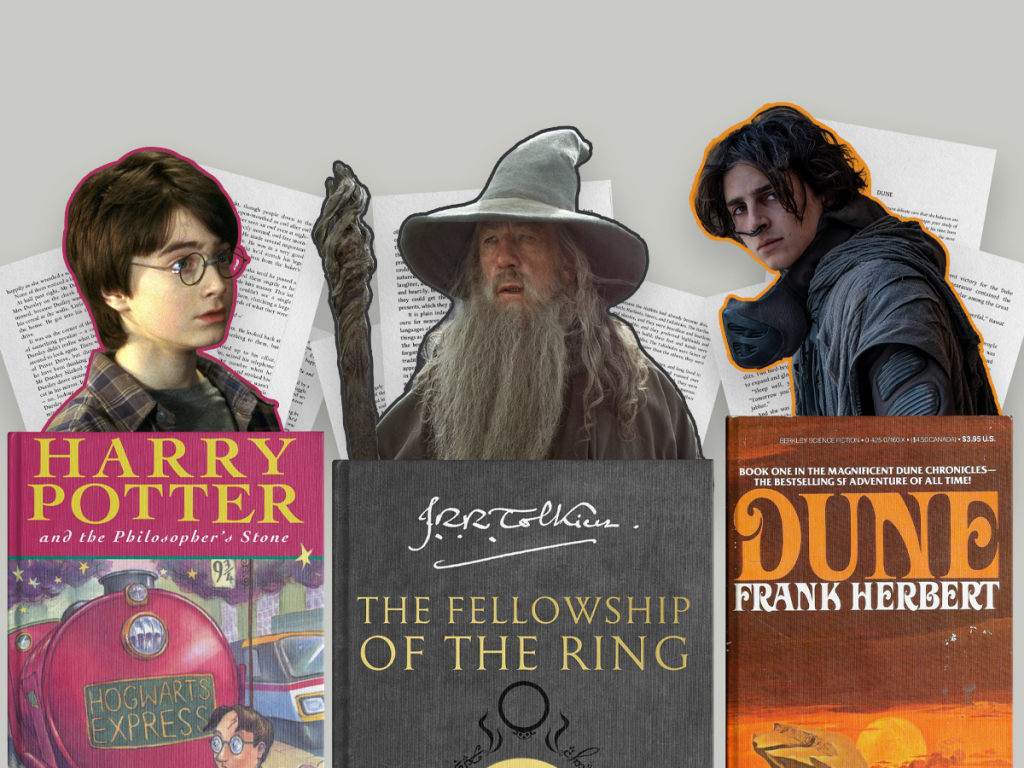Label volunteer writer Laura Gray Núñez explores some of her favourite book-to-screen adaptations, challenging the view that films cannot compete with book originals.
Some people, especially book-lovers, prefer books over movies and series, especially if it requires comparing the film or show adaptation of a book to the novel it was based on. However, many book-to-screen adaptations mentioned in this article are classics in the film world and some are even more well-known than the book itself.
Some of the most impactful book-to-screen adaptations are thrillers like, for instance, The Shining. The book was written by Stephen King and the film was directed by Stanley Kubrik, two geniuses of horror dominating two different forms. It is surrealistic and intense for its time, executed well with impactful cinematic shots and silences. It showcases haunted spaces, both externally and internally, in someone’s psyche. Jack Nicholson’s improvised acting makes it a great film as well.
Other thrillers include Psycho, considered one of the greatest thriller films of all time. The novel by Robert Broch was brought to movie screens by Alfred Hitchcock, who changed the horror genre forever and created suspense in-film. The shower scene shows, for the first time in cinema, the murder of one of the main characters. Other brief mentions of great film adaptations of horror books and thrillers are The Exorcist and The Silence of the Lambs.
Slumdog Millionaire is another great film, originally based on a novel written by Vikas Swarup. It details an Indian teenager who is able to win “Who wants to be a millionaire” because of his life experiences and rich knowledge. It is a beautiful film, taking you along an extraordinary, yet ordinary, teenage boy’s life.
Jurassic Park is also once a novel written by Michael Crichton. Steven Speilsberg managed to bring dinosaurs into life and film. This film is considered one of the many greats by Steven Spielsberg, and brought dinosaurs to the big screen in a wonderful manner. It is still one of my personal favorite movies!
Moreover, a more modern film which is loved by many bookworms alike is Call Me By Your Name. Southern Italy is gorgeously portrayed with aesthetic cinematography, and the romance between the main characters is strong and beautiful. The ending credits wherein Timothee Chalamét is crying for over ten minutes with a lost stare is worth noting as well, the acting makes the book’s original plot come to life.
Lastly, I want to mention Pride and Prejudice, a novel by Jane Austen brought to movie fans. One of the scenes where Mr Darcy’s hand was featured was heavily broken down and popularized by fans. It shows that Mr Darcy is affected by Lizzie because of his hand movements or “flex”. This acting scene was an improvisation. The book in general is wonderfully brought to life and the narrative was modernised and made less heavy to the viewer.
Other honourable mentions that are considered cinema classics were some such as The Godfather, Schindler’s List, and Gone With The Wind, which will forever be treasured by cinephiles because of the mark they left in cinema. However, some of my honourable mentions because they are my personal favourites, are the BBC’s Sherlock Holmes’ series, Hidden Figures and My Sister’s Keeper because they are a revival of some amazing novels and a great comfort series and film to watch at home. Hidden Figures also represents some figures of women in science and in important positions who were forgotten, and it tells wonderful stories we may not have known if it weren’t for the popularity of the film.
In conclusion, not all movies are worse than books! Some offer different perspectives, but they are all worth examining because films offer other wonders that books can’t, and the reverse can also be true, helping viewers and readers enjoy narratives in new lights.
Article Edited by: Rebecca Pearson – Deputy Editor
Header Designed by: Sarim Mangi – Head of Design


